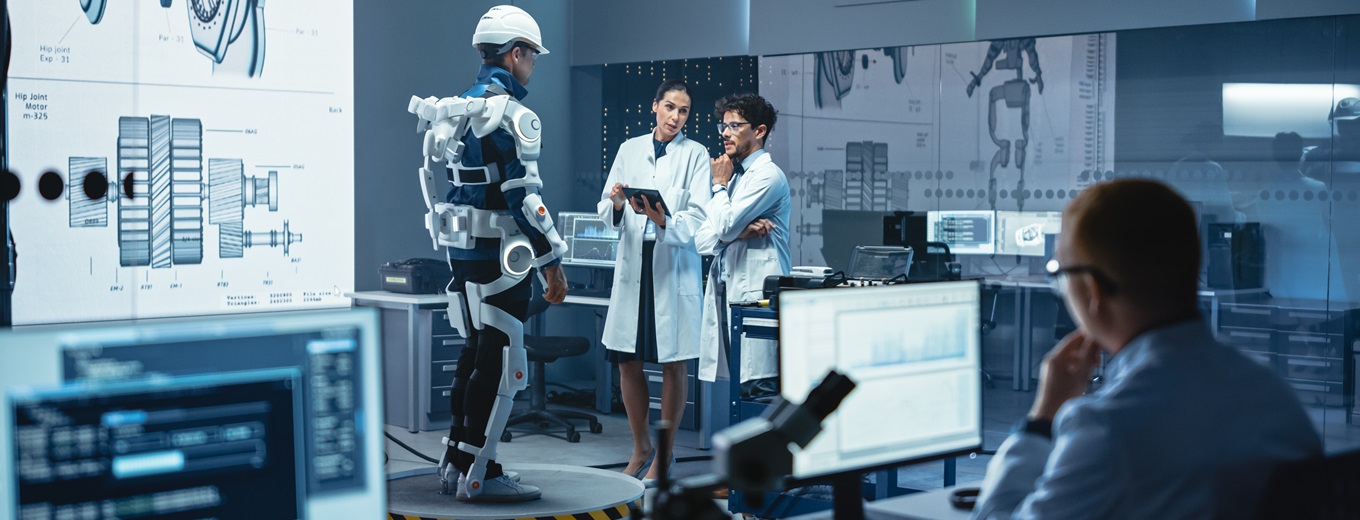The Commission report wants to expand the focus of human-centric technology development from efficiency and safety to sustainability.
On 25 July 2024, the European Commission (EC) published the new ERA Industrial Technologies Roadmap on Human-Centric Research and Innovation, with a focus on the manufacturing sector. In her foreword, Commissioner Iliana Ivanova describes human-centric as being based on the values and principles of trust, security, openness and inclusiveness. She further stresses that Europe is lagging behind in human-centric technology patents, but cites the recently adopted EU Artificial Intelligence Act as a prime example of the EU’s work to support human-centric technology development in Europe. This new roadmap, in turn, shows gaps and the potential of human-centric technology in the EU and gives recommendations on fostering human-centricity in the manufacturing sector. It is part of the European Research Area (ERA) policy framework and a deliverable of ERA Action 12. There are other ERA roadmaps to chart the way forward for European R&I in specific areas, for example for low-carbon technologies (see SwissCore article).
The authors of the roadmap define human centricity as “multidimensional framework that places human needs, characteristics, motivation and experiences at the centre of design, development, and implementation of technological solutions and organisational practises that not only meet functional requirements but also enhance human well-being, capabilities, skills, and working conditions”. The report lists the concrete categories of human-centric design in manufacturing: i. speech and gesture recognition and human intention prediction, ii. tracking technologies for mental and physical strain, iii. robotics, iv. augmented, virtual or mixed reality technologies, v. enhancing physical human capabilities, such as exoskeletons, vi. enhancing cognitive human capabilities, such as decision support systems. Out of those categories, by far the most start-ups in the EU were created in human-centric robotics, followed by human-centric industrial wearables and smart artefacts. The other categories lag far behind (see page 32 of the report). Looking at which types of human-centric technologies are already most widely used, machine learning and robotics are on top.
According to the EC, human-centric R&I should be an important factor contributing to addressing the societal, economic, and environmental challenges in Europe. However, as the Commissioner pointed out, the majority of actors developing human-centric technologies are from China and the US. The report confirms that there are a number of well-established top-patenting companies in France, Germany and Switzerland (notably ABB) but barely in other European countries. Taking into account the European start-ups in this sector, most of them are based in Italy and Germany. The challenge in boosting these figures is linked to the high costs of development and experimentation equipment. On a positive note, the report states that venture capital investments in human-centric technologies in Europe are going up. And also public funding programmes move more to this sector: The authors looked at human-centred projects that were funded by Horizon Europe and Horizon 2020. In Horizon Europe, they found that an “increased prevalence of terms related to the human body, which are also intertwined with technology-related terms like robot” (see page 45, figure 26) compared to Horizon 2020.
When it comes to adopting more human-centric technologies, the report shows that the most cited reasons in a survey are by far improving worker safety (86%) and increasing efficiency through automation (82%). Other reasons are mentioned only by a minority of companies. The EC report, however, would like to see new technologies “as a means to achieve societal objectives that go beyond mere efficiency”. The authors want to shift the traditional focus of efficiency, safety and user-friendliness of new technologies to improving society and the environment too. The report, therefore, calls on policymakers to play a more active role in promoting this human-centric vision of technology development. Among other elements, the report therefore also suggests an adjustment of R&I funding programmes to boost human-centric technology development.

